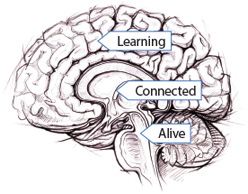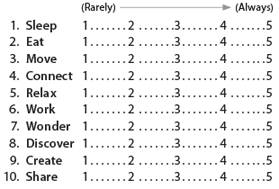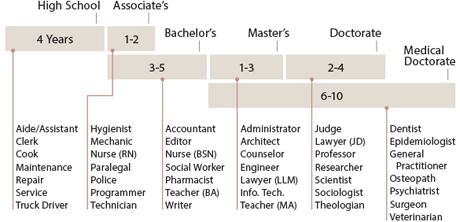Video: The Quest to Understand Consciousness
Web Page: Study Confirms Social Brain Theory
Web Page: Scientists Gain New Insight Into Prefrontal Cortex Activity
Web Page: The Wheel of Life
Web Page: Matching Careers to Degrees

Your brain is very practical. Its first job is to keep you alive. Its second job is to keep you connected to other people, which is part of staying alive. Its third job is to learn things. Not surprisingly, your brain mostly wants to learn things that connect you to other people and keep you alive. To be ready to learn, you must be healthy, happy, and socially connected. Developing the following 10 critical habits will ensure that you are ready to learn.
Your Turn Rate how often you practice the 10 critical habits for learning, from 1 (rarely) to 5 (always). Then choose two habits that need more attention, and tell how you will improve each.

The visible spectrum of light consists of a range of colors, from violet through red. In the same way, your life should consist of a spectrum of priorities. Living a full-color life means balancing the parts of your life so that things don’t become just monotone.

Your Turn How colorful is your life? Do you have a balance of colors, as shown above, or do one or two colors dominate? Would you use the same five labels you see above, or would you replace some with other labels? Create and label a spectrum representing the colors of your own life. How might you improve the balance of colors?
In general, the more education you receive, the farther you can go in your career. Remember, however, that each type of degree takes a number of years to complete. Here is a diagram of different types of degrees, the number of years they take, and some jobs available with those degrees.

Another path for training after high school is to enlist in one of the U.S. Armed Forces. Service members receive not only military training but also skills that can lead to civilian occupations and certifications. (See page 506 for an example.)
Your Turn Scan the list of jobs above. Do any match your desired profession? What other jobs can you name for the different education levels? What education do you plan to get in order to get the best job for you?
Video: The Quest to Understand Consciousness
Web Page: Study Confirms Social Brain Theory
Web Page: Scientists Gain New Insight Into Prefrontal Cortex Activity
Web Page: The Wheel of Life
Web Page: Matching Careers to Degrees
© 2014 Thoughtful Learning
